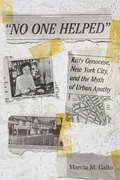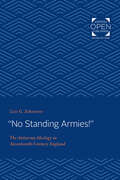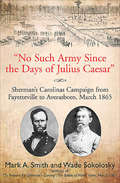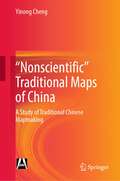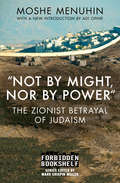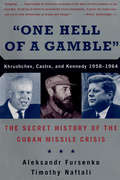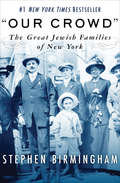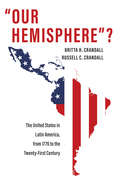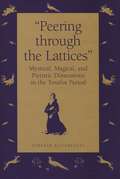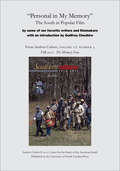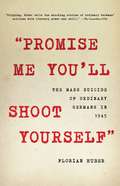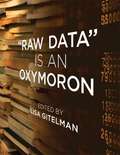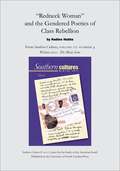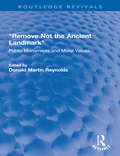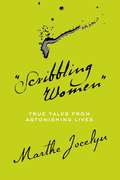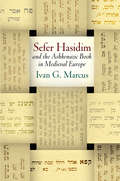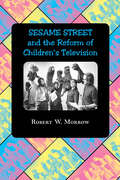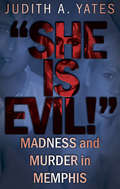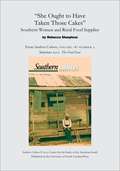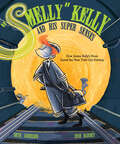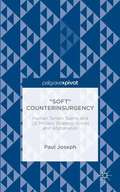- Table View
- List View
"No One Helped": Kitty Genovese, New York City, and the Myth of Urban Apathy
by Marcia M. GalloIn "No One Helped" Marcia M. Gallo examines one of America's most infamous true-crime stories: the 1964 rape and murder of Catherine "Kitty" Genovese in a middle-class neighborhood of Queens, New York. Front-page reports in the New York Times incorrectly identified thirty-eight indifferent witnesses to the crime, fueling fears of apathy and urban decay. Genovese's life, including her lesbian relationship, also was obscured in media accounts of the crime. Fifty years later, the story of Kitty Genovese continues to circulate in popular culture. Although it is now widely known that there were far fewer actual witnesses to the crime than was reported in 1964, the moral of the story continues to be urban apathy. "No One Helped" traces the Genovese story's development and resilience while challenging the myth it created. "No One Helped" places the conscious creation and promotion of the Genovese story within a changing urban environment. Gallo reviews New York's shifting racial and economic demographics and explores post-World War II examinations of conscience regarding the horrors of Nazism. These were important factors in the uncritical acceptance of the story by most media, political leaders, and the public despite repeated protests from Genovese's Kew Gardens neighbors at their inaccurate portrayal. The crime led to advances in criminal justice and psychology, such as the development of the 911 emergency system and numerous studies of bystander behaviors. Gallo emphasizes that the response to the crime also led to increased community organizing as well as feminist campaigns against sexual violence. Even though the particulars of the sad story of her death were distorted, Kitty Genovese left an enduring legacy of positive changes to the urban environment.
"No Standing Armies!": The Antiarmy Ideology in Seventeenth-Century England
by Lois G. SchwoererOriginally published in 1974. In her study of primary materials in England and the United States, Schwoerer traces the origin, development, and articulation in both Parliament and in the popular press of the attitude opposing standing armies in seventeenth-century England and the American colonies. Central to the criticism of armies at that time was the conviction that ultimate military power should be vested in Parliament, not the Crown. Schwoerer shows how the many diverse elements of England's antimilitarism, including political principle, propaganda, parliamentary tactics, parochialism, and partisanship, hardened with every confrontation between the Crown or Protector and Parliament. The author finds a general predisposition to distrust professional soldiers early in the century, and from the 1620s onward she notes opposition to a standing army in times of peace. Highlighting the growth of the antimilitary tradition, Schwoerer traces the development of this attitude from the Petition of Right in 1628 to the 1641–1642 crisis over the Militia Bill/Ordinance, the military settlements of 1660 and 1689, and the climactic events of 1667–1699. Schwoerer shows how the anti-standing-army ideology affected the constitutional thinking of the American colonists and manifested itself in the Constitution and the Bill of Rights. She addresses timeless questions of how to provide for a nation's defense while preserving individual liberty, citizen responsibility for military service, and the relationship of executive and legislative authority over the army.
"No Such Army Since the Days of Julius Caesar": Sherman's Carolinas Campaign from Fayetteville to Averasboro, March 1865
by Mark A. Smith Wade SokoloskyGeneral William T. Shermans 1865 Carolinas Campaign receives scant attention from most Civil War historians, largely because it was overshadowed by the Army of Northern Virginias final battles against the Army of the Potomac. Career military officers Mark A. Smith and Wade Sokolosky rectify this oversight with No Such Army Since the Days of Julius Caesar, a careful and impartial examination of Shermans army and its many accomplishments.The authors dedicate their professional training and research and writing abilities to the critical days of March 11-16, 1865the overlooked run-up to the seminal Battle of Bentonville (March 19-21, 1865). They begin with the capture of Fayetteville and the demolition of the arsenal there, before chronicling the two-day Battle of Averasboro in more detail than any other study. At Averasboro, Lt. Gen. William J. Hardees Confederates conducted a well-planned and brilliantly executed defense-in-depth that held Shermans juggernaut in check for two days. With his objective accomplished, Hardee disengaged and marched to concentrate his corps with Gen. Joseph E. Johnston for what would become Bentonville.This completely revised and updated edition of No Such Army Since the Days of Julius Caesar: Shermans Carolinas Campaign from Fayetteville to Averasboro, March 1865 is based upon extensive archival and firsthand research. It includes new original maps, orders of battle, abundant illustrations, and a detailed driving and walking tour for dedicated battlefield enthusiasts. Readers with an interest in the Carolinas, Generals Sherman and Johnston, or the Civil War in general will enjoy this book.
"Nonscientific” Traditional Maps of China: A Study of Traditional Chinese Mapmaking
by Yinong ChengThis book analyzes the drawing data and methods of the Chinese ancient maps that are neglected by the previous researches, and reevaluates the drawing theories and methods, the influences, and accuracy of the maps that represents the scientificity of Chinese ancient cartographic drawings.
"Not by Might, Nor by Power": The Zionist Betrayal of Judaism (Forbidden Bookshelf #22)
by Moshe MenuhinWith a new introduction by Adi Ophir: An early and fierce critique of Zionism from a Jewish child of Palestine who argued against nationalism and injustice. Born in 1893, Moshe Menuhin was part of the inaugural class to attend the first Zionist high school in Palestine, the Herzliya gymnasium in Tel Aviv. He had grown up in a Hasidic home, but eventually rejected orthodoxy while remaining dedicated to Judaism. As a witness to the evolution of Israel, Menuhin grew disaffected with what he saw as a betrayal of the Jews&’ spiritual principles. This memoir, written in 1965, is considered the first revisionist history of Zionism. A groundbreaking document, it discusses the treatment of the Palestinians, the effects of the Holocaust, the exploitation of the Mizrahi Jewish immigrants, and the use of propaganda to win over public opinion in America and among American Jews. In a postscript added after the Six-Day War, Menuhin also addresses the question of occupation. This new edition is updated with an introduction by Israeli philosopher Adi Ophir, putting Menuhin&’s work into a contemporary historical context. Passionate and sometimes inflammatory in its prose, and met with controversy and anger upon its original publication under the title The Decadence of Judaism in Our Time, Menuhin&’s polemic remains both a thought-provoking reassessment of Zionist history and a fascinating look at one observer&’s experience of this embattled corner of the world over the course of several tumultuous decades.
"Old Slow Town": Detroit During the Civil War
by Paul TaylorThough it was located far away from Southern battlefields, Detroit churned with unrest during the American Civil War. The city's population, including a large German and Irish immigrant community, mostly aligned with anti-war Democrats while the rest of the state stood with the pro-Lincoln Republicans. The virulently anti-Lincoln and anti-Black Detroit Free Press fanned the city's flames with provocative coverage of events. In "Old Slow Town": Detroit during the Civil War, award-winning author Paul Taylor contends that the anger within Detroit's diverse political and ethnic communities over questions about the war's purpose and its conduct nearly tore the city in two. Taylor charts Civil War-era Detroit's evolution from a quiet but growing industrial city (derisively called "old slow town" by some visitors) to a center of political contention and controversy. In eight chapters, Taylor details topics including the pre-war ethnic and commercial development of the city; fear and suspicion of "secret societies"; issues of race, gender, and economic strife during the war; Detroit's response to its soldiers' needs; and celebration and remembrance at the conclusion of the conflict. Taylor's use of rarely seen military correspondence from the National Archives, soldier and civilian diaries and letters, period articles and editorials from Detroit's Civil War-era newspapers, and his fresh, judicious synthesis of secondary sources results in a captivating depiction of Detroit's Civil War history. Until now, why events occurred as they did in Detroit during the Civil War and what life was like for its residents has only been touched upon in any number of general histories. Readers interested in American history, Civil War history, or the ethnic history of Detroit will appreciate the full picture of the time period Taylor presents in "Old Slow Town."
"One Hell of a Gamble": Krushchev, Castro, and Kennedy, 1958-1964
by Timothy Naftali Aleksandr FursenkoBased on classified Soviet archives, including the files of Nikita Khrushchev and the KGB, "One Hell of a Gamble" offers a riveting play-by-play history of the Cuban missile crisis from American and Soviet perspectives simultaneously. No other book offers this inside look at the strategies of the Soviet leadership. John F. Kennedy did not live to write his memoirs; Fidel Castro will not reveal what he knows; and the records of the Soviet Union have long been sealed from public view: Of the most frightening episode of the Cold War--the Cuban Missile Crisis--we have had an incomplete picture. When did Castro embrace the Soviet Union? What proposals were put before the Kremlin through Kennedy's back-channel diplomacy? How close did we come to nuclear war? These questions have now been answered for the first time. This important and controversial book draws the missing half of the story from secret Soviet archives revealed exclusively by the authors, including the files of Nikita Khrushchev and his leadership circle. Contained in these remarkable documents are the details of over forty secret meetings between Robert Kennedy and his Soviet contact, records of Castro's first solicitation of Soviet favor, and the plans, suspicions, and strategies of Khrushchev. This unique research opportunity has allowed the authors to tell the complete, fascinating, and terrifying story of the most dangerous days of the last half-century.
"Our Crowd": The Great Jewish Families of New York (Modern Jewish History Ser.)
by Stephen BirminghamThe #1 New York Times bestseller that traces the rise of the Guggenheims, the Goldmans, and other families from immigrant poverty to social prominence. They immigrated to America from Germany in the nineteenth century with names like Loeb, Sachs, Seligman, Lehman, Guggenheim, and Goldman. From tenements on the Lower East Side to Park Avenue mansions, this handful of Jewish families turned small businesses into imposing enterprises and amassed spectacular fortunes. But despite possessing breathtaking wealth that rivaled the Astors and Rockefellers, they were barred by the gentile establishment from the lofty realm of &“the 400,&” a register of New York&’s most elite, because of their religion and humble backgrounds. In response, they created their own elite &“100,&” a privileged society as opulent and exclusive as the one that had refused them entry. &“Our Crowd&” is the fascinating story of this rarefied society. Based on letters, documents, diary entries, and intimate personal remembrances of family lore by members of these most illustrious clans, it is an engrossing portrait of upper-class Jewish life over two centuries; a riveting story of the bankers, brokers, financiers, philanthropists, and business tycoons who started with nothing and turned their family names into American institutions.
"Our Gallant Doctor": Surgeon-Lieutenant George Hendry and HMCS Ottawa, 1942
by James GoodwinDuring the Battle of the Atlantic, Dr. George Hendry had just finished performing two major surgical operations on board the destroyer HMCS Ottawa when his ship was ambushed by 13 German U-boats. Canadian warships like Ottawa had inadequate radar sets that were incapable of detecting submarines approaching in the dark. On September 13, 1942, U-91 stole in and torpedoed Ottawa, sinking her in 20 minutes. utterly exhausted, Dr. Hendry was lost along with 113 of his shipmates. George Hendry was a much-loved man, a great university athlete, and a very good doctor. Unfortunately, he was also naive and too trusting. One night in January 1941, he committed a very foolish indiscretion. He would spend the rest of his tragically short life making amends for this mistake.
"Our Hemisphere"?: The United States in Latin America, from 1776 to the Twenty-First Century
by Russell C. Crandall Britta H. CrandallAn accessible exploration of U.S.–Latin American relations. from the colonial period to the present day &“&‘Our Hemisphere&’? is a balanced and nuanced portrayal of the history of U.S.–Latin American relations. The attention given to more recent episodes on immigration, the drug war and U.S. policy toward Cuba and Venezuela, is especially welcome.&”—Allen Wells, author of Tropical Zion: General Trujillo, FDR and the Jews of Sosúa &“Our Hemisphere&”? uncovers the range, depth, and veracity of the United States&’ relationship with the Americas. Using short historical vignettes, Britta and Russell Crandall chart the course of inter‑American relations from 1776 to the present, highlighting the roles that individuals and groups of soldiers, intellectuals, private citizens, and politicians have had in shaping U.S. policy toward Latin America in the postcolonial, Cold War, and post–Cold War eras. The United States is usually and correctly seen as pursuing a monolithic, hegemonic agenda in Latin America, wielding political, economic, and military muscle to force Latin American countries to do its bidding, but the Crandalls reveal unexpected yet salient regional interactions where Latin Americans have exercised their own power with their northern and very powerful neighbor. Moreover, they show that Washington&’s relationship with the region has relied, in addition to the usual heavy‑handedness, on cooperation and mutual respect since the beginning of the relationship.
"Peering Through the Lattices": Mystical, Magical, and Pietistic Dimensions in the Tosafist Period
by Ephraim KanarfogelDuring the high Middle Ages, the tosafists flourished in northern Europe and revolutionized the study of the Talmud. These Jewish scholars did not participate in the philosophical and religious thought that concerned Christendom, and today they are seen as having played a limited role in mystical or esoteric studies. Ephraim Kanarfogel now challenges this conventional view of the tosafists, showing that many individuals were influenced by ascetic and pietistic practices and were involved with mystical and magical doctrines. He traces the presence of these disciplines in the pre-Crusade period, shows how they are intertwined, and suggests that the widely available Hekhalot literature was an important conduit for this material. He also demonstrates that the asceticism and esotericism of the German Pietists were an integral part of Ashkenazic rabbinic culture after the failure of Rashbam and other early tosafists to suppress these aspects of pre-Crusade thinking. The identification of these various forms of spirituality places the tosafists among those medieval rabbinic thinkers who sought to supplement their Talmudism with other areas of knowledge such as philosophy and kabbalah, demonstrating the compatibility of rabbinic culture and mysticism. These interests, argues Kanarfogel, explain both references to medieval Ashkenazic rabbinic figures in kabbalistic literature and the acceptance of certain ascetic and mystical practices by later Ashkenazic scholars. Drawing on original manuscript research, Kanarfogel makes available for the first time many passages produced by lesser known tosafists and rabbinic figures and integrates the findings of earlier and contemporary scholarship, much of it published only in Hebrew. "Peering through the Lattices" provides a greater appreciation for these texts and opens up new opportunities for scholarhship in Jewish history and thought.
"Personal in My Memory": The South in Popular Film by some of our favorite writers and filmmakers
by Godfrey CheshirePersonal in My Memory"The South in Popular Filmby some of our favorite writers and filmmakers with an introduction by Godfrey CheshireAlice Walker, Allan Gurganus, Randall Kenan, Joe Flora, Kenneth Turan, Elizabeth Spencer, and Andrew Garrison tell how their favorite Southern films marked them indelibly."We have two imaginary kingdoms. One, 'the South,' exists primarily in song, oral traditions and folkways, native art and literature. The other, 'Hollywood,' creates mass-produced audiovisual entertainments for American and world audiences, and develops its own mythology."
"Political Shari'a"? Human Rights and Islamic Law in Northern Nigeria
by Human Rights WatchSince 2000, twelve states in northern Nigeria have added criminal law to the jurisdiction of Shari'a (Islamic law) courts. Shari'a has been in force for many years in northern Nigeria, where the majority of the population is Muslim, but until 2000, its scope was limited to personal status and civil law. The manner in which Shari'a has been applied to criminal law in Nigeria so far has raised a number of serious human rights concerns. It has also created much controversy in a country where religious divisions run deep, and where the federal constitution specifies that there is no state religion.
"Promise Me You'll Shoot Yourself": The Mass Suicide of Ordinary Germans in 1945
by Florian HuberNamed a Best History Book of 2019 by The Times (UK)The astounding true story of how thousands of ordinary Germans, overcome by shame, guilt, and fear, killed themselves after the fall of the Third Reich and the end of World War II.By the end of April 1945 in Germany, the Third Reich had fallen and invasion was underway. As the Red Army advanced, horrifying stories spread about the depravity of its soldiers. For many German people, there seemed to be nothing left but disgrace and despair. For tens of thousands of them, the only option was to choose death -- for themselves and for their children. "Promise Me You'll Shoot Yourself" recounts this little-known mass event. Using diaries, letters, and memoirs, historian Florian Huber traces the euphoria of many ordinary Germans as Hitler restored national pride; their indifference as the Führer's political enemies, Jews, and other minorities began to suffer; and the descent into despair as the war took its terrible toll, especially after the invasion of the Soviet Union. Above all, he investigates how suicide became a contagious epidemic as the country collapsed.Drawing on eyewitness accounts and other primary sources, "Promise Me You'll Shoot Yourself" presents a riveting portrait of a nation in crisis, and sheds light on a dramatic yet largely unknown episode of postwar Germany.
"Raw Data" Is an Oxymoron
by Lisa GitelmanWe live in the era of Big Data, with storage and transmission capacity measured not just in terabytes but in petabytes (where peta- denotes a quadrillion, or a thousand trillion). Data collection is constant and even insidious, with every click and every "like" stored somewhere for something. This book reminds us that data is anything but "raw," that we shouldn't think of data as a natural resource but as a cultural one that needs to be generated, protected, and interpreted. The book's essays describe eight episodes in the history of data from the predigital to the digital. Together they address such issues as the ways that different kinds of data and different domains of inquiry are mutually defining; how data are variously "cooked" in the processes of their collection and use; and conflicts over what can -- or can't -- be "reduced" to data. Contributors discuss the intellectual history of data as a concept; describe early financial modeling and some unusual sources for astronomical data; discover the prehistory of the database in newspaper clippings and index cards; and consider contemporary "dataveillance" of our online habits as well as the complexity of scientific data curation. Essay authors:Geoffrey C. Bowker, Kevin R. Brine, Ellen Gruber Garvey, Lisa Gitelman, Steven J. Jackson, Virginia Jackson, Markus Krajewski, Mary Poovey, Rita Raley, David Ribes, Daniel Rosenberg, Matthew Stanley, Travis D. Williams
"Redneck Woman" and the Gendered Poetics of Class Rebellion
by Nadine HubbsIn 2004 Gretchen Wilson exploded onto the country music scene with 'Redneck Woman.' The blockbuster single led to the early release of her first CD and propelled it to triple platinum sales."Gretchen Wilson celebrates a new kind Virile Woman on the country music scene--but this subtle gender analysis reveals much more than immediately meets the eye.This article appears in the 2011 Music issue of Southern Cultures.Southern Cultures is published quarterly (spring, summer, fall, winter) by the University of North Carolina Press. The journal is sponsored by the University of North Carolina at Chapel Hill's Center for the Study of the American South.
"Remove Not the Ancient Landmark": Public Monuments and Moral Values (Routledge Revivals)
by Donald Martin ReynoldsFirst published in 1996, "Remove Not the Ancient Landmark" explores the ways that public monuments symbolize and convey moral values. It analyzes the roles that monuments have always played and the influence they continue to exert on societies around the world. The book also explores the origins and nature of humanity in light of the monuments.
"Scribbling Women": True Tales from Astonishing Lives
by Marthe JocelynIn 1855, Nathaniel Hawthorne wrote to his publisher, complaining about the irritating fad of "scribbling women." Whether they were written by professionals, by women who simply wanted to connect with others, or by those who wanted to leave a record of their lives, those "scribbles" are fascinating, informative, and instructive.Margaret Catchpole was a transported prisoner whose eleven letters provide the earliest record of white settlement in Australia. Writing hundreds of years later, Aboriginal writer Doris Pilkington-Garimara wrote a novel about another kind of exile in Australia. Young Isabella Beeton, one of twenty-one children and herself the mother of four, managed to write a groundbreaking cookbook before she died at the age of twenty-eight. World traveler and journalist Nelly Bly used her writing to expose terrible injustices. Sei Shonagan has left us poetry and journal entries that provide a vivid look at the pampered life and intrigues in Japan's imperial court. Ada Blackjack, sole survivor of a disastrous scientific expedition in the Arctic, fought isolation and fear with her precious Eversharp pencil. Dr. Dang Thuy Tram's diary, written in a field hospital in the steaming North Vietnamese jungle while American bombs fell, is a heartbreaking record of fear and hope.Many of the women in "Scribbling Women" had eventful lives. They became friends with cannibals, delivered babies, stole horses, and sailed on whaling ships. Others lived quietly, close to home. But each of them has illuminated the world through her words.A note from the author: OOPS! On page 197, the credit for the Portrait of Harriet Jacobs on page 43 should read: courtesy of Library of Congress, not Jean Fagan Yellin. On page 197, the credit for the portrait of Isabella Beeton on page 61 should read: National Portrait Gallery, London. On page 198, the credit for page 147 should be Dang Kim Tram, not Kim Tram Dang. We are very sorry about the mix-up in the Photo Credits, they will be updated on any new editions or reprints.From the Hardcover edition.
"Sefer Hasidim" and the Ashkenazic Book in Medieval Europe (Jewish Culture and Contexts)
by Ivan G. MarcusComposed in Germany in the early thirteenth century by Judah ben Samuel he-hasid, Sefer Hasidim, or "Book of the Pietists," is a compendium of religious instruction that portrays the everyday life of Jews as they lived together with and apart from Christians in towns such as Speyer, Worms, Mainz, and Regensburg. A charismatic religious teacher who recorded hundreds of original stories that mirrored situations in medieval social living, Judah's messages advocated praying slowly and avoiding honor, pleasure, wealth, and the lures of unmarried sex. Although he failed to enact his utopian vision of a pietist Jewish society, his collected writings would help shape the religious culture of Ashkenazic Judaism for centuries.In "Sefer Hasidim" and the Ashkenazic Book in Medieval Europe, Ivan G. Marcus proposes a new paradigm for understanding how this particular book was composed. The work, he contends, was an open text written by a single author in hundreds of disjunctive, yet self-contained, segments, which were then combined into multiple alternative versions, each equally authoritative. While Sefer Hasidim offers the clearest example of this model of composition, Marcus argues that it was not unique: the production of Ashkenazic books in small and easily rearranged paragraphs is a literary and cultural phenomenon quite distinct from anything practiced by the Christian authors of northern Europe or the Sephardic Jews of the south. According to Marcus, Judah, in authoring Sefer Hasidim in this manner, not only resisted Greco-Roman influences on Ashkenazic literary form but also extended an earlier Byzantine rabbinic tradition of authorship into medieval European Jewish culture.
"Sesame Street" and the Reform of Children's Television
by Robert W. MorrowOutstanding Academic Title for 2007, Choice MagazineBy the late 1960s more than a few critics of American culture groused about the condition of television programming and, in particular, the quality and content of television shows for children. In the eyes of the reform-minded, commercial television crassly exploited young viewers; its violence and tastelessness served no higher purpose than the bottom line. The Children's Television Workshop (CTW)—and its fresh approach to writing and producing programs for kids—emerged from this growing concern. Sesame Street—CTW's flagship, hour-long show—aimed to demonstrate how television could help all preschoolers, including low-income urban children, prepare for first grade. In this engaging study Robert W. Morrow explores the origins and inner workings of CTW, how the workshop in New York scripted and designed Sesame Street, and how the show became both a model for network television as well as a thorn in its side. Through extensive archival research and a systematic study of sample programs from Sesame Street's first ten seasons, Morrow tells the story of Sesame Street's creation; the ideas, techniques, organization, and funding behind it; its place in public discourse; and its ultimate and unfortunate failure as an agent of commercial television reform.
"Sesame Street" and the Reform of Children's Television
by Robert W. Morrow“[An] accessible, well-researched introduction to the people and principles behind the show’s creation . . . Essential.” —Choice (An Outstanding Academic Title of the Year) By the late 1960s more than a few critics of American culture groused about the condition of television programming and, in particular, the quality and content of television shows for children. In the eyes of the reform-minded, commercial television crassly exploited young viewers; its violence and tastelessness served no higher purpose than the bottom line.The Children’s Television Workshop (CTW)—and its fresh approach to writing and producing programs for kids—emerged from this growing concern. Sesame Street—CTW’s flagship hour-long show—aimed to demonstrate how television could help all preschoolers, including low-income urban children, prepare for first grade. In this engaging study Robert W. Morrow explores the origins and inner workings of CTW, how the workshop in New York scripted and designed Sesame Street, and how the show became both a model for network television and a thorn in its side.Through extensive archival research and a systematic study of sample programs from Sesame Street’s first ten seasons, Morrow tells the story of Sesame Street’s creation; the ideas, techniques, organization, and funding behind it; its place in public discourse; and its ultimate and unfortunate failure as an agent of commercial television reform.“An insightful look at American children's television.” —Library Journal
"She Is Evil!": Madness and Murder in Memphis
by Judith A. YatesThe true crime story of an immigrant&’s success, an abusive wife, and a grisly murder from the award–winning criminologist author of When Nashville Bled. Ejaz Ahmad was handsome, charismatic, and a self-made businessman. He arrived in the United States from Pakistan determined to fulfill his mother&’s dying wish: to come to America, complete his education, and make his mark in the world. Settling in Memphis, Tennessee, Ejaz became owner of several businesses, father to a handsome boy, and a devout Muslim. The only thing missing in his life was a wife, someone special to protect, honor, and love. Leah Ward was a pretty girl, but a prison parolee with a history of drug charges, petty crime, and a questionable past. She led a flotsam life, drifting from town to city to state. When she was introduced to Ejaz Ahmad, she believed she had found the ultimate answer: a place to live, someone to take care of her, and money to spend. But what began idyllic soon became abusive and then dangerous for Ejaz. His friends and family warned him. And in May of 2003 Ejaz paid the ultimate price when family members found his mutilated body in a shed.She Is Evil is a story of trust, abuse, religion, and murder. Of a kind man who tried to help a troubled woman and became the victim of abuse and, eventually, a heinous murder.
"She Ought to Have Taken Those Cakes": Southern Women and Rural Food Supplies
by Rebecca SharplessIn April 1930, five hundred potential customers showed up at the opening of Staunton's curb market, and in 1936, the market's most successful vendor, Nettie Shull, made more than $2,000 by selling potato chips, fried apple pies, potato salad, and dressed poultry."This article appears in the Summer 2012 issue of Southern Cultures. The full issue is also available as an ebook.Southern Cultures is published quarterly (spring, summer, fall, winter) by the University of North Carolina Press. The journal is sponsored by the University of North Carolina at Chapel Hill's Center for the Study of the American South.
"Smelly" Kelly and His Super Senses: How James Kelly's Nose Saved the New York City Subway
by Beth AndersonNSTA Best STEM Book James "Smelly" Kelly used his super-senses and intelligence to make sure that the New York City subway in the 1930s ran safely throughout his lifetime and beyond.James Kelly smelled EVERYTHING: rats in the shed; circus elephants a mile away; tomorrow's rain. His sense of smell was EXTRAORDINARY. But what good was a powerful nose? How could his super-sniffer make him special? In the New York City subway, James found his calling--and earned the nickname "Smelly" Kelly. Armed with his super-sniffer and the tools he invented, he tracked down leaks from the dangerous to the disgusting, from the comical to the bizarre. Then, he sprang into action to prevent cave-ins and explosions in the tunnels beneath the city. Smelly Kelly not only hunted leaks but also saved lives--and he discovered the truly extraordinary power inside him. Beth Anderson's fast-paced text and Jenn Harney's comical illustrations bring to life this everyday superhero.
"Soft" Counterinsurgency: Human Terrain Teams and US Military Strategy in Iraq and Afghanistan
by Paul JosephSoft Counterinsurgency reviews the promises and achievements of Human Terrain Teams, the small groups of social scientists that were eventually embedded in every combat brigade in Iraq and Afghanistan.
